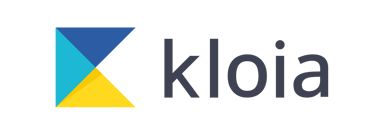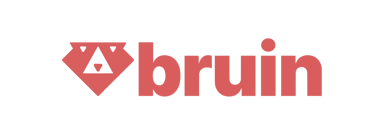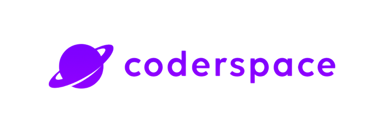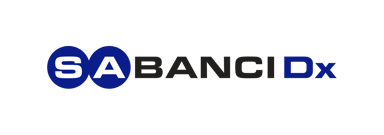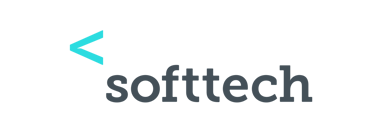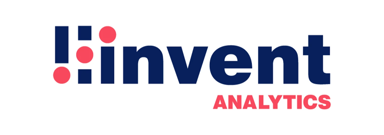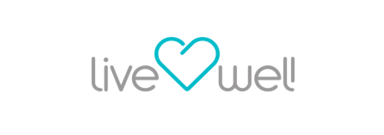
How Recruiting Software is Streamlining the Hiring Process
HR professionals know that finding and hiring top talent is no easy task. Traditional hiring is filled with manual screening, countless email threads, and stacks of paperwork. It is now being replaced by a smoother, tech-driven process that’s much more efficient.
Modern recruiting software is changing the game. It's making the hiring process much faster and easier. Let's see how this tech is helping companies find the right talent in today's competitive job market. ⭐️
What is Recruiting Software?
Recruiting software, often called recruitment management software or an applicant tracking system (ATS)—is a digital tool that helps streamline and simplify the hiring process. Think of it as a digital hiring assistant that covers everything from posting job ads to onboarding new hires.
Today’s recruiting software takes advantage of AI, automation, and data analytics to change the way companies find, assess, and hire candidates. It’s moved beyond simply storing resumes; now, it creates a smart, adaptable hiring process tailored to your organization’s unique needs, evolving right alongside your business.
Key Features of Modern Recruiting Software

Automated Job Posting and Distribution
- Simultaneous posting to multiple job boards with one click
- Smart social media integration for wider reach and engagement
- Dynamic career page management and customization
- Custom job description templates for consistency
- Automated job refresh and reposting capabilities
- SEO optimization for job postings
- Multi-language posting support
- Location-based job distribution
Resume Parsing and Screening
- AI-powered candidate screening algorithms
- Intelligent keyword matching and skills assessment
- Automatic candidate ranking based on job fit
- Resume data extraction and standardization
- Duplicate candidate detection
- Custom screening questionnaires
- Skills assessment integration
- Background check automation
- Social media profile parsing
Candidate Communication Hub
- Automated email responses and follow-ups
- Smart interview scheduling with calendar integration
- Multi-channel communication including SMS notifications
- Customizable communication templates
- Candidate engagement tracking
- Automated reminder systems
- Video interview integration
- Chatbot support for candidate queries
- Multi-language communication support
Collaborative Hiring Tools
- Team feedback collection and aggregation
- Structured interview scorecards
- Real-time hiring team communication platform
- Shared candidate notes and evaluations
- Mobile-friendly interface for on-the-go assessments
- Custom workflow creation
- Role-based access control
- Interview panel management
- Collaborative hiring decisions
How Recruiting Software Transforms the Hiring Process
Streamlined Candidate Sourcing
The days of manually posting jobs on multiple platforms are now over. Modern recruiting software automatically shares your job postings across various channels, including job boards, social media, and your company's career page. This multi-channel approach creates maximum visibility and helps attract diverse candidates while saving time.
The software also helps in building and maintaining talent pools, allowing you to tap into previously engaged candidates for new positions. This proactive approach significantly reduces time-to-fill for future openings.
Enhanced Candidate Experience
Today's candidates expect a smooth, professional hiring process. Leading ATS platforms provide mobile-friendly application processes, automated status updates, and seamless communication channels. This improved experience not only attracts better candidates but also strengthens your employer brand and reduces candidate drop-off rates.
Organizations using modern recruiting software often report higher candidate satisfaction scores and increased referral rates. The transparency and responsiveness of automated systems help create a positive impression of your company, even among candidates who aren't selected.
Data-Driven Decision Making
Recruiting software gives valuable insights into your hiring process by using advanced analytics. From identifying the most effective sourcing channels to optimizing your job descriptions, these data-driven insights help you make better decisions and continuously improve your strategy. Regular reporting helps identify blockages and areas for improvement.
Key metrics tracked typically include:
- Source effectiveness
- Time-to-fill by department
- Cost-per-hire trends
- Candidate drop-off points
- Interview-to-offer ratios
- Hiring manager satisfaction
- Candidate experience scores
Time and Cost Savings
Automation of routine tasks like resume screening, interview scheduling, and candidate communication saves countless hours of manual work. Organizations typically report higher reduction in time-to-hire after implementing modern recruiting software, allowing HR professionals to focus on more strategic tasks. 📌
Implementing Recruiting Software: Best Practices
1. Assessment and Planning
- Evaluate your current recruitment process thoroughly
- Identify specific pain points and inefficiencies
- Define clear objectives and success metrics
- Get stakeholder buy-in across departments
- Create a detailed implementation timeline
- Establish a budget and ROI expectations
- Assess technical requirements
- Plan for data security compliance
- Create contingency plans
2. Choosing the Right Solution
- Consider your organization's size and growth plans
- Evaluate integration capabilities with existing systems
- Check for scalability options and pricing models
- Assess user-friendliness and training requirements
- Review security features and compliance standards
- Compare vendor support and service levels
- Examine mobile capabilities
- Verify customization options
- Check customer references
3. Implementation Strategy
- Plan for comprehensive data migration
- Create a detailed training schedule
- Develop standard operating procedures
- Set up a phased rollout plan
- Establish clear communication channels
- Create backup plans for critical processes
- Test integrations thoroughly
- Document configuration settings
- Create user guides and resources
4. Change Management
- Communicate benefits to all stakeholders clearly
- Provide comprehensive training materials
- Gather and act on user feedback regularly
- Monitor adoption rates and address resistance
- Celebrate early wins and success stories
- Maintain ongoing support and training
- Create champions within teams
- Regular check-ins and updates
- Continuous improvement programs
Impact on Key Recruitment Metrics
Time-to-Hire
Leading recruiting software solutions have shown to reduce time-to-hire through automation of manual tasks and streamlined workflows. Some organizations report filling positions in half the time compared to their previous manual processes. This improvement comes from 👇:
- Faster candidate screening
- Automated scheduling and follow-ups
- Streamlined team collaboration
- Reduced administrative bottlenecks
- Improved communication flow
- Better candidate matching
- Efficient workflow management
- Automated reference checks
Cost-per-Hire
By optimizing job posting strategies and reducing administrative overhead, modern ATS platforms significantly lower recruitment costs. Companies usually see a reduction in cost-per-hire after implementation through👇:
- More efficient job posting management
- Reduced agency dependencies
- Lower administrative costs
- Improved resource allocation
- Better sourcing strategies
- Reduced time waste
- Optimized advertising spend
- Enhanced internal mobility
Quality of Hire
Advanced screening algorithms and standardized evaluation processes lead to better candidate selection. Organizations report improvement in new hire performance when using data-driven recruitment tools, attributed to👇:
- Better candidate matching
- Structured evaluation processes
- Improved collaboration in hiring decisions
- Data-driven selection criteria
- Standardized assessments
- Comprehensive candidate profiles
- Better cultural fit assessment
- Improved onboarding processes
The Role of Modern Applicant Tracking Systems
Today's applicant tracking systems go beyond basic resume storage. Leading solutions offer integrated talent acquisition suites that handle everything from sourcing to onboarding.
Innovative platforms like Hirex are revolutionizing how companies approach recruitment with a comprehensive suite of features. These include AI-powered candidate matching and ranking, predictive analytics for hiring success, and automated workflow customization.
The platforms also provide advanced collaboration tools, comprehensive recruitment analytics, and custom reporting capabilities. Furthermore, they offer seamless integration with HRIS systems, mobile recruitment capabilities, and employer branding tools.
These modern systems deliver multiple benefits to organizations. They significantly reduce manual data entry while improving compliance tracking and enhancing candidate engagement. Organizations can streamline their hiring workflows and generate valuable insights from their recruitment data.
Hirex enhances the recruitment process further with specialized features designed for modern hiring needs. These include structured assessment tests for skills evaluation, detailed candidate scorecards, and integrated video interview capabilities for remote hiring.
The platform facilitates collaborative hiring through team-based workflows and comprehensive HR tools. Advanced offer approval workflows streamline the final stages of hiring, while detailed team rights and roles ensure proper access control and security. ⭐️
The Future of Recruitment Technology
Recruiting software is only going to get smarter. Machine learning algorithms will become more high-level in predicting candidate success, while automation will handle an even greater portion of routine tasks. We can expect to see 📌:
- Enhanced AI-driven candidate assessment
- Virtual reality interview capabilities
- Advanced predictive analytics
- Improved candidate experience personalization
- Greater integration with workplace tools
- Enhanced mobile recruitment features
- Blockchain for credential verification
- Automated reference checking
- Improved diversity and inclusion tools
- Real-time market intelligence
- Advanced talent pipeline management
- Predictive retention modeling
If you want to stay ahead in the hiring game, recruiting software isn’t just a nice-to-have, it’s a must-have. These tools are changing the way companies hire by automating routine tasks, giving us data to make better decisions, and making the process better for job seekers.
When used right, recruiting software can help you hire faster, save money, and attract the best talent. It’s not just about automating your old way of doing things; it’s about completely rethinking how you hire. By embracing this technology, companies can win the talent war and build stronger teams. The future of hiring is digital, and it’s here now. 🎯
Get a demo
- Quickly find top candidates with smart application management
- Improve team collaboration using built-in communication and workflows
- Offer a smooth candidate experience to strengthen your employer brand
- Count on 24/7 support for a hassle-free hiring process
- Quickly find top candidates with smart application management
- Improve team collaboration using built-in communication and workflows
- Offer a smooth candidate experience to strengthen your employer brand
- Count on 24/7 support for a hassle-free hiring process
"We truly felt the speed difference. Everything was smoother, and candidate feedback was much more positive. It made our jobs easier."

Trusted by 100+ teams
Get Informed,F.A.Q.
Revolutionize your hiring process with our transformative Applicant Tracking System (ATS.)
Suggested Blog Posts

40+ Employee Wellness Statistics

12 Employee Engagement Statistics to Track in 2026

